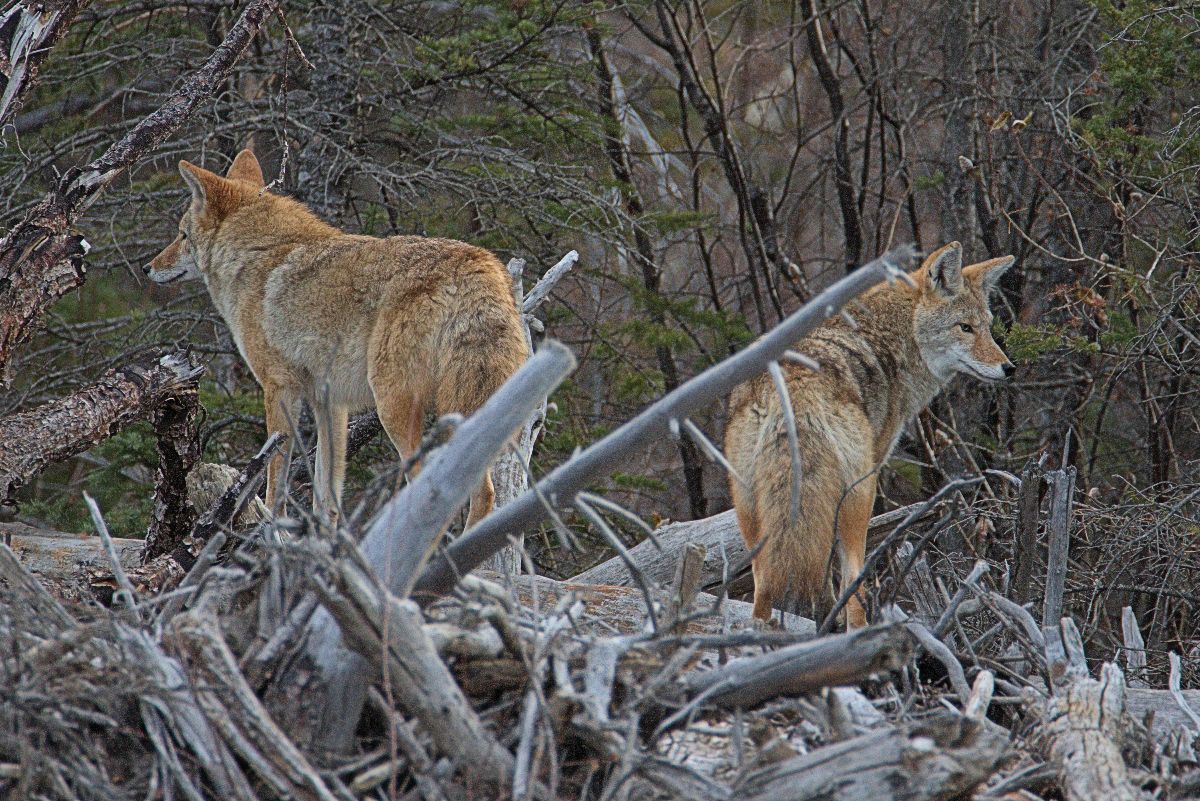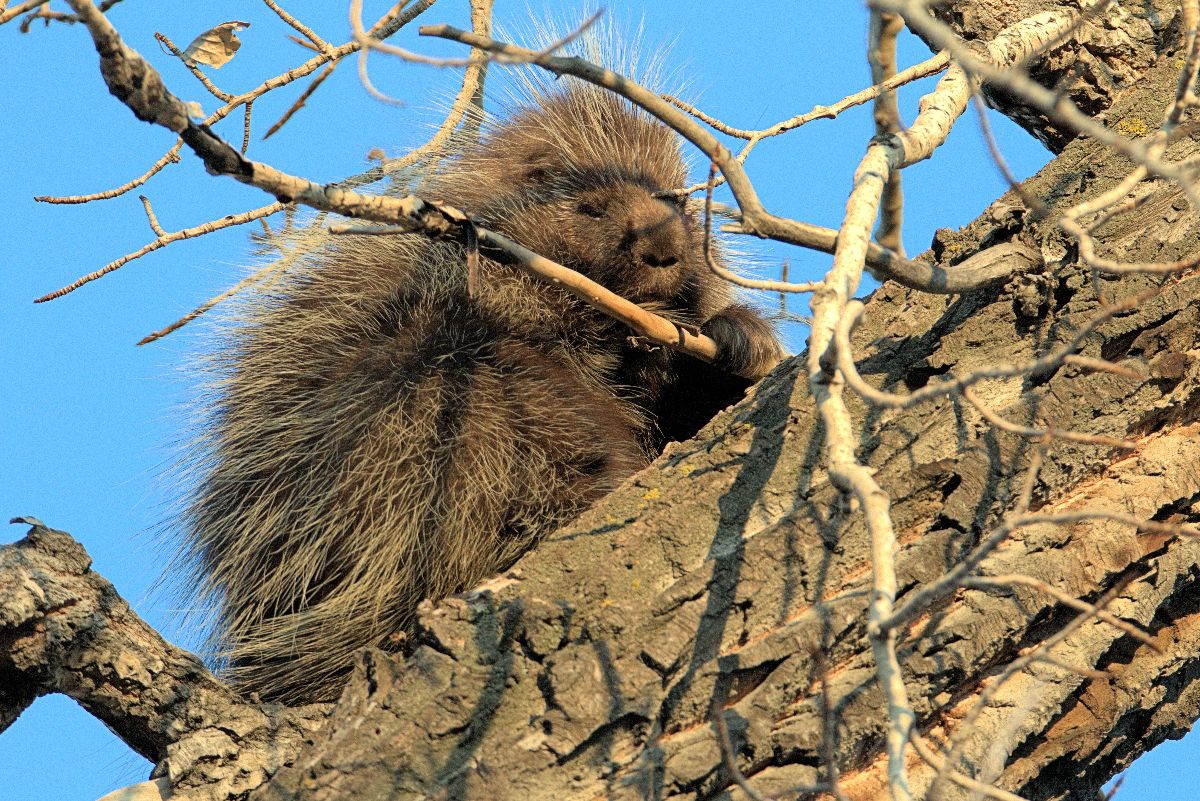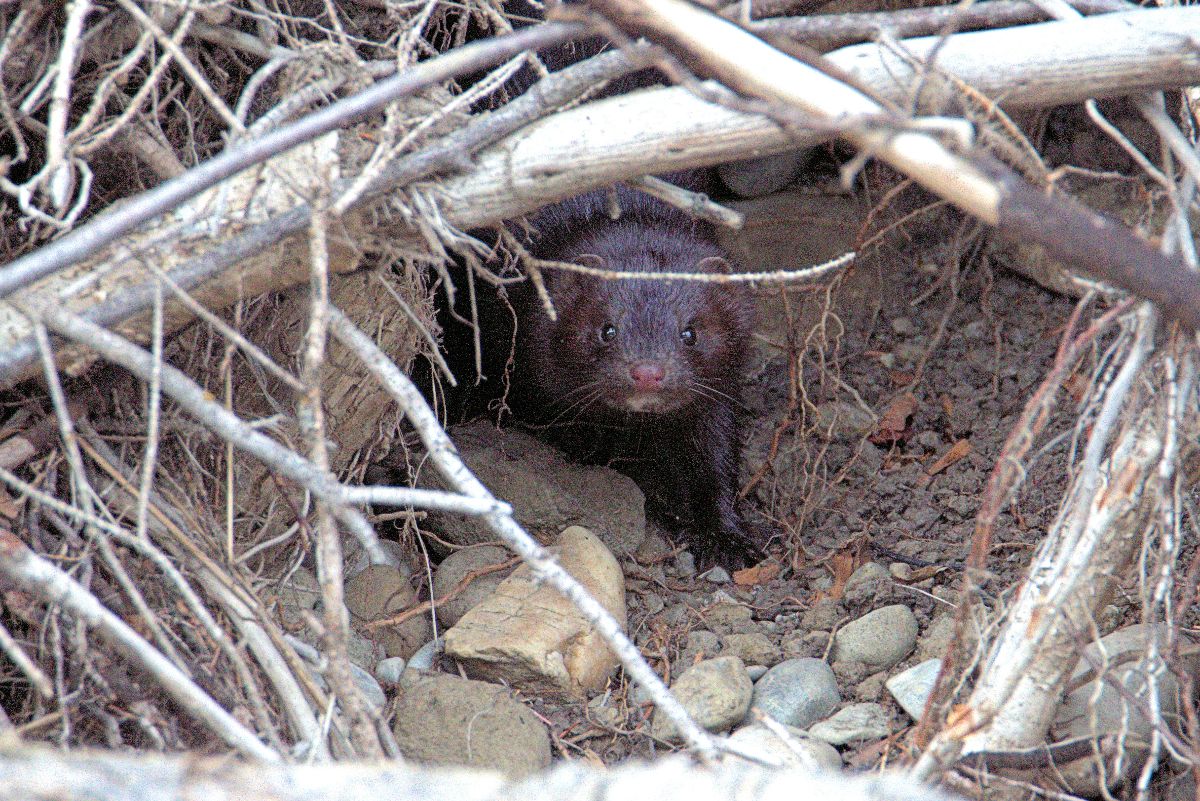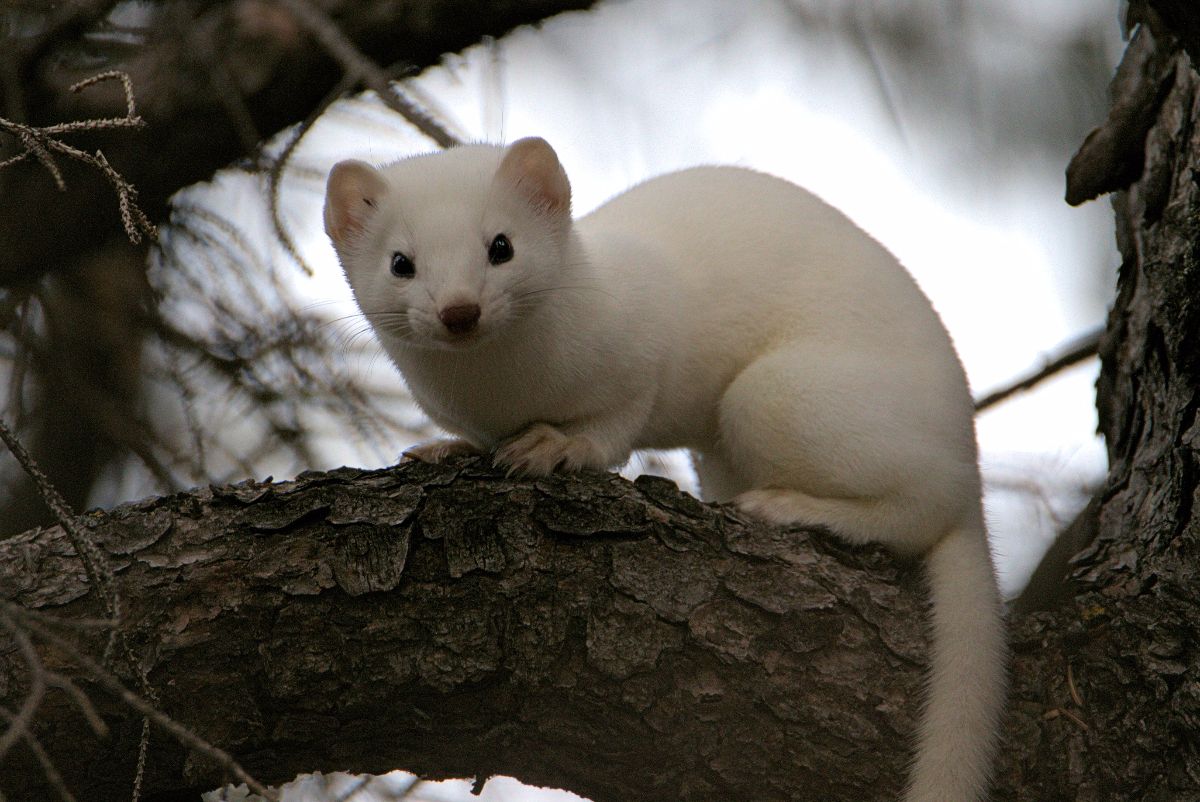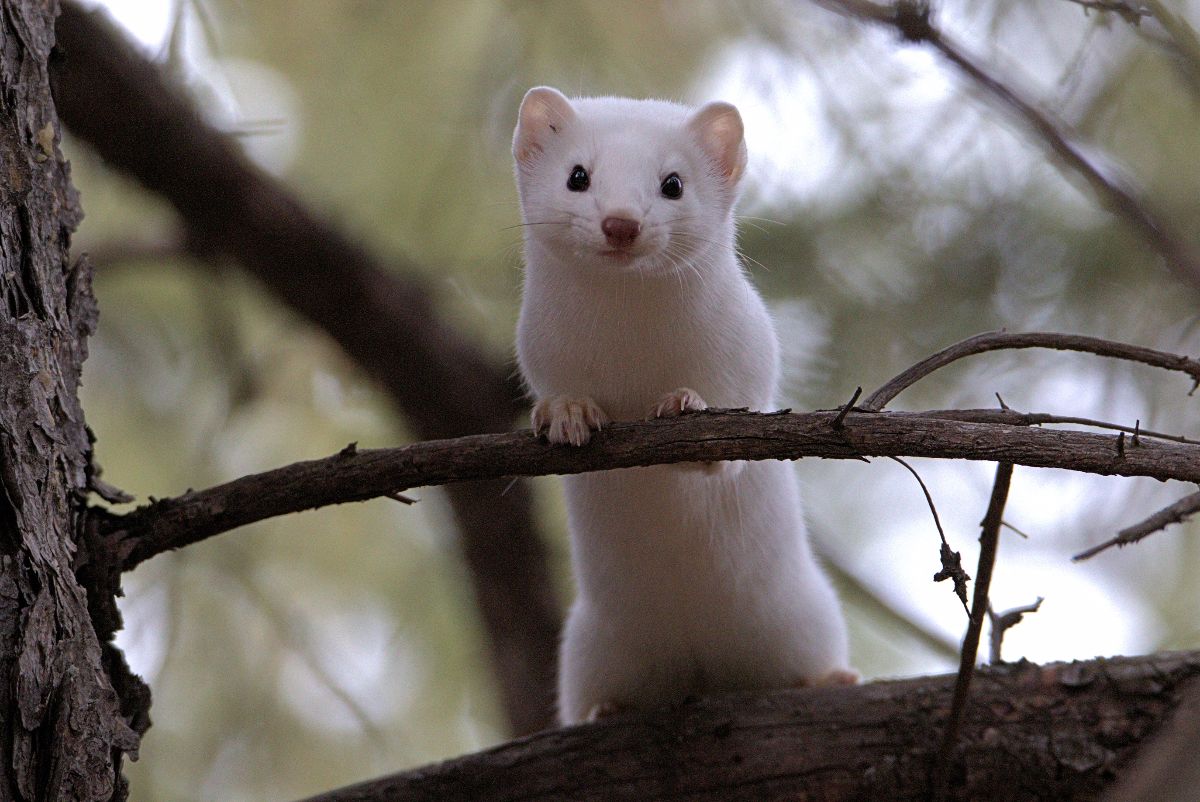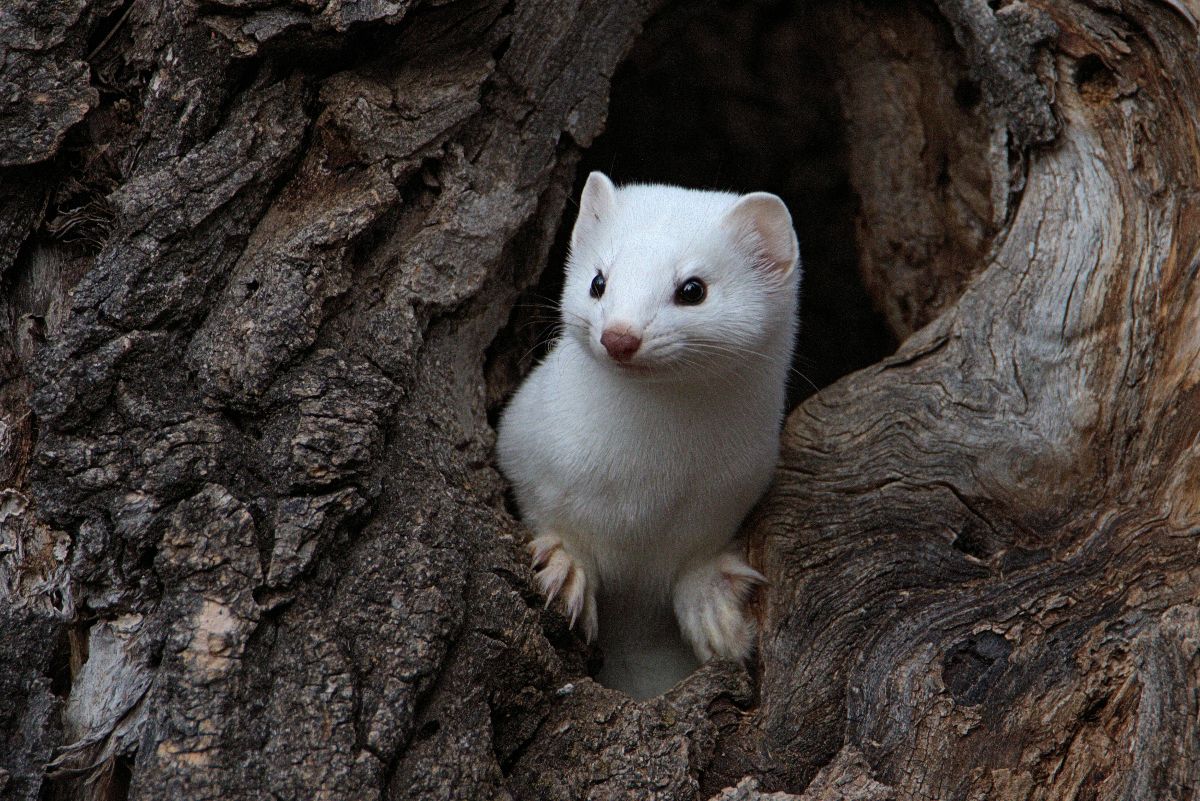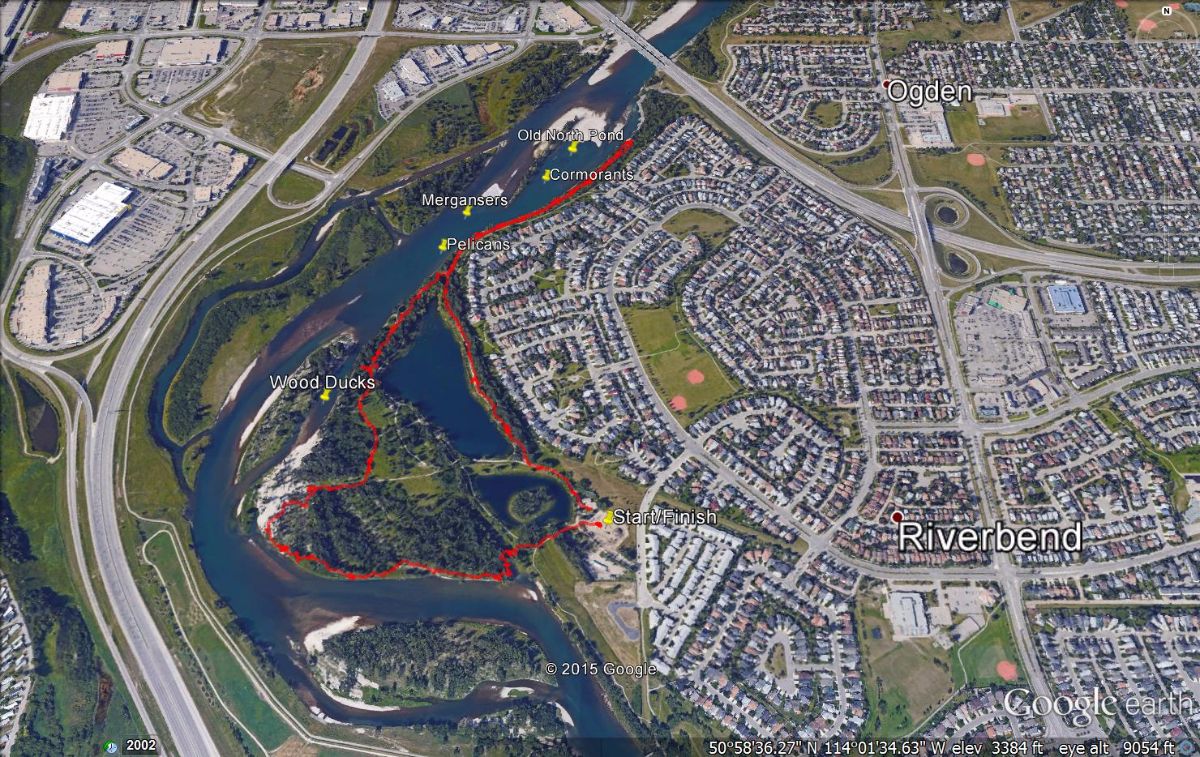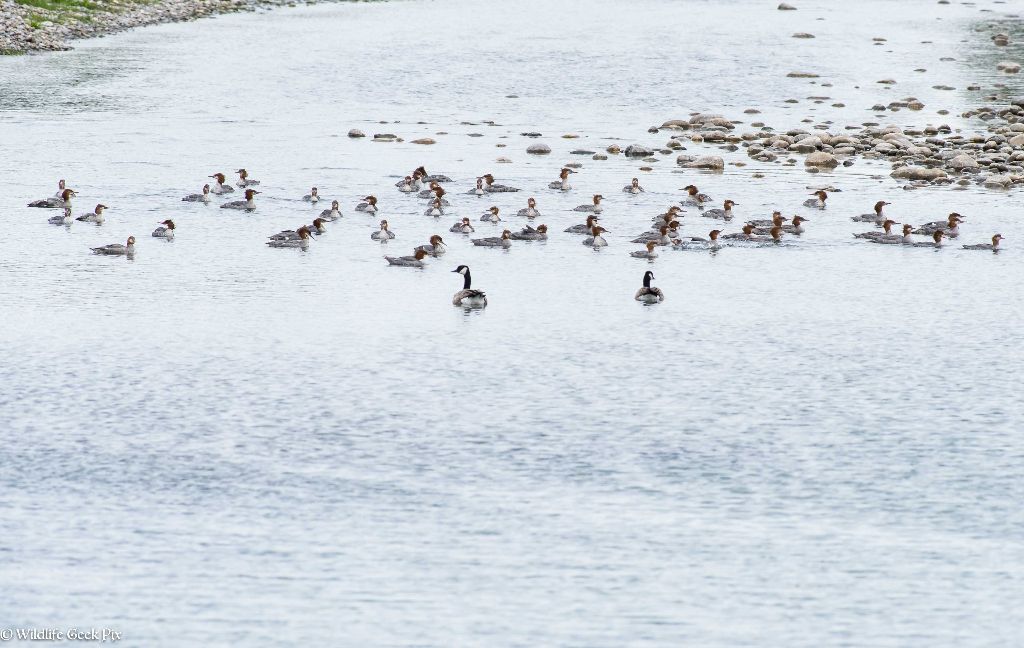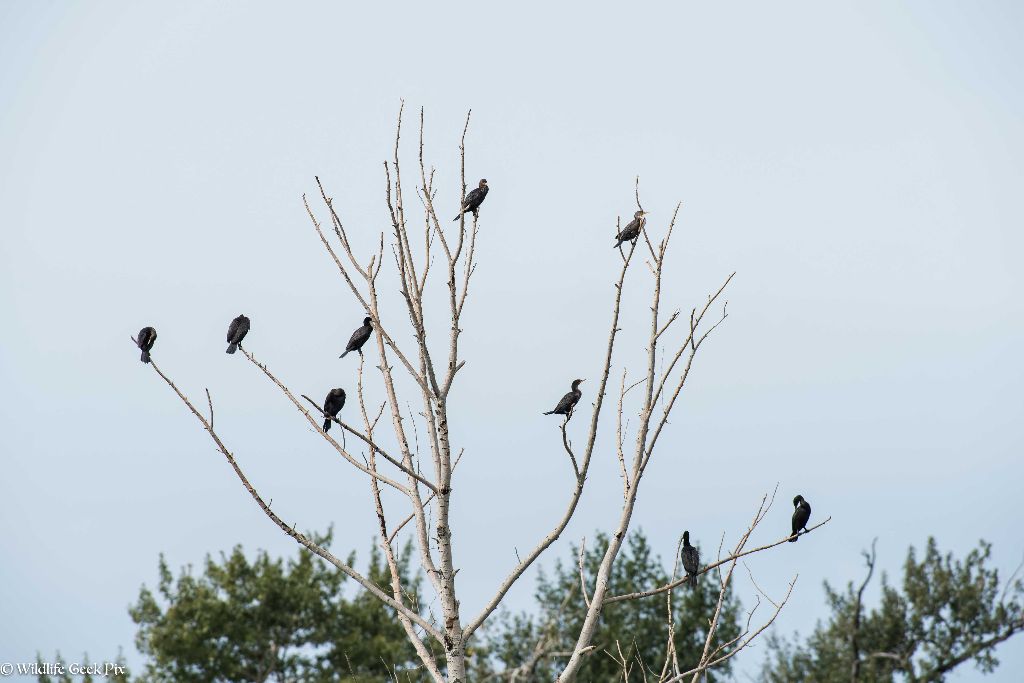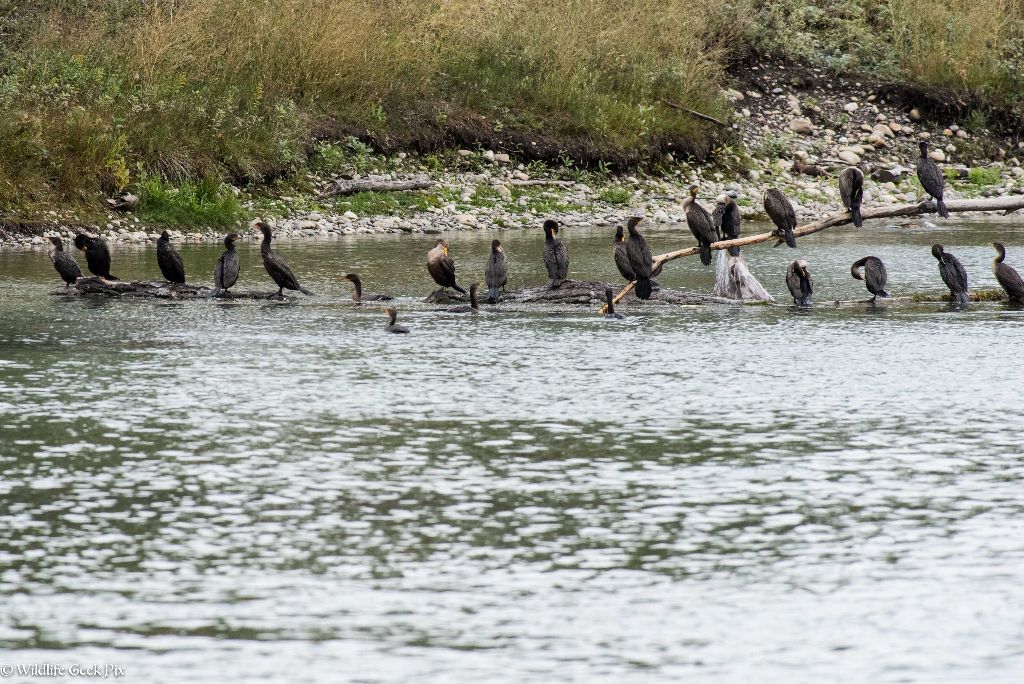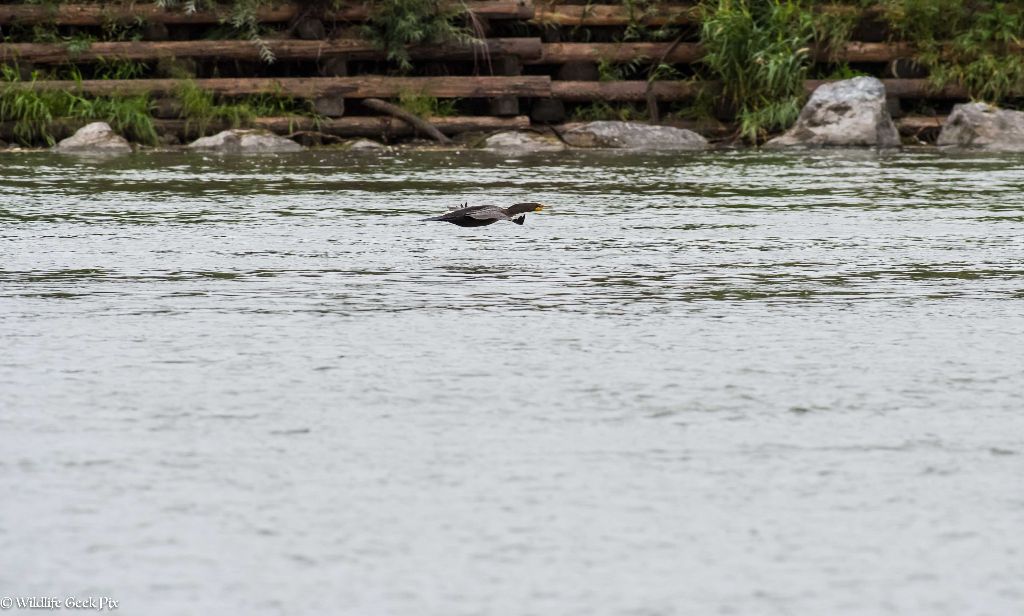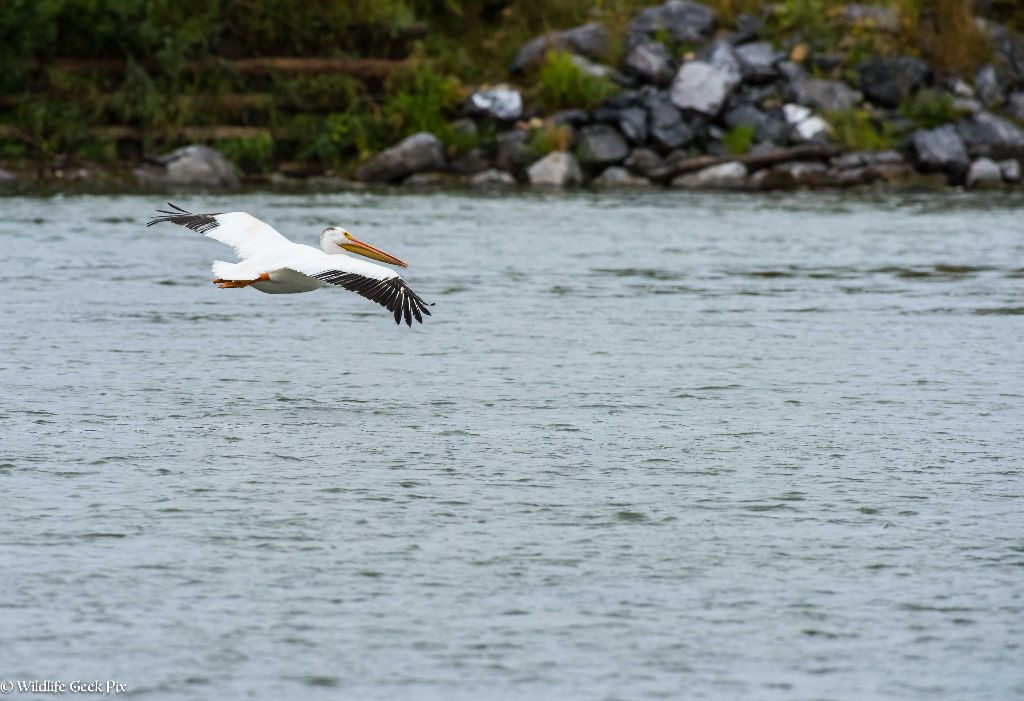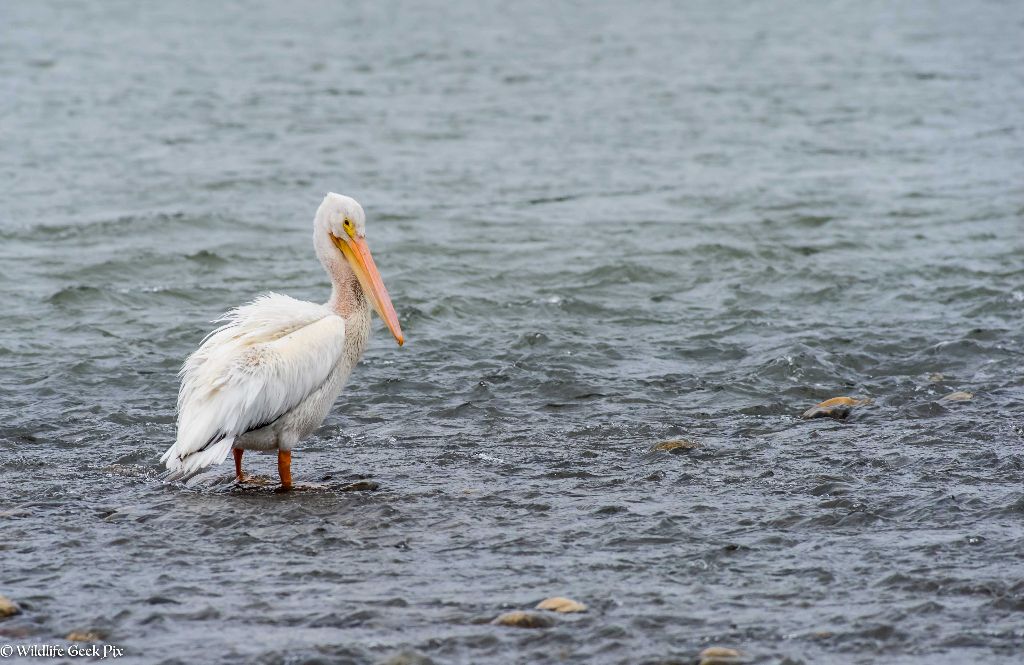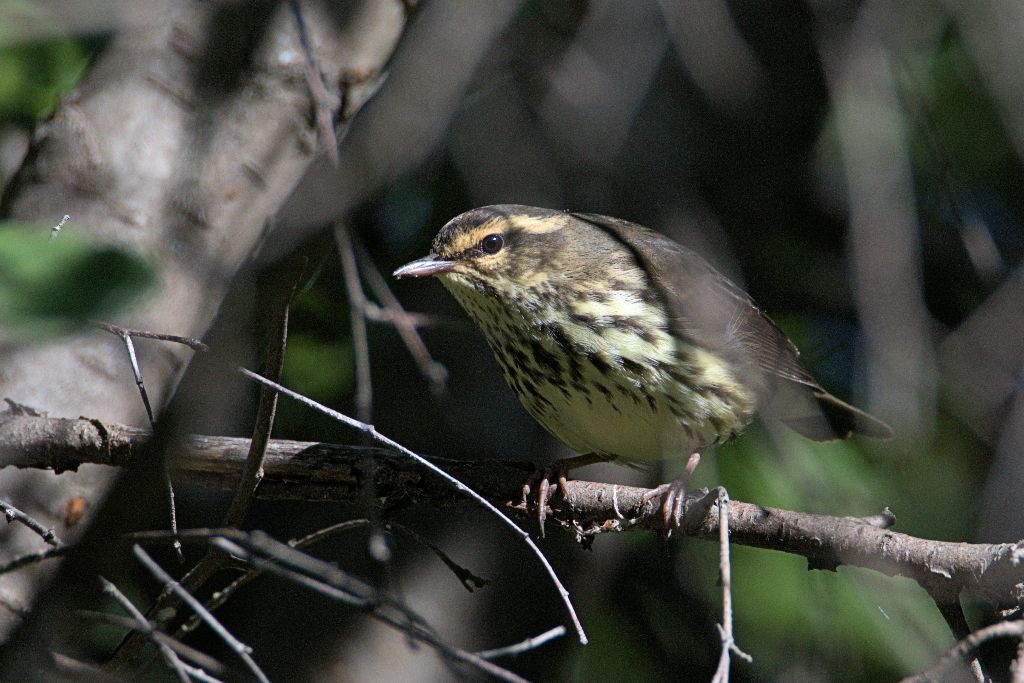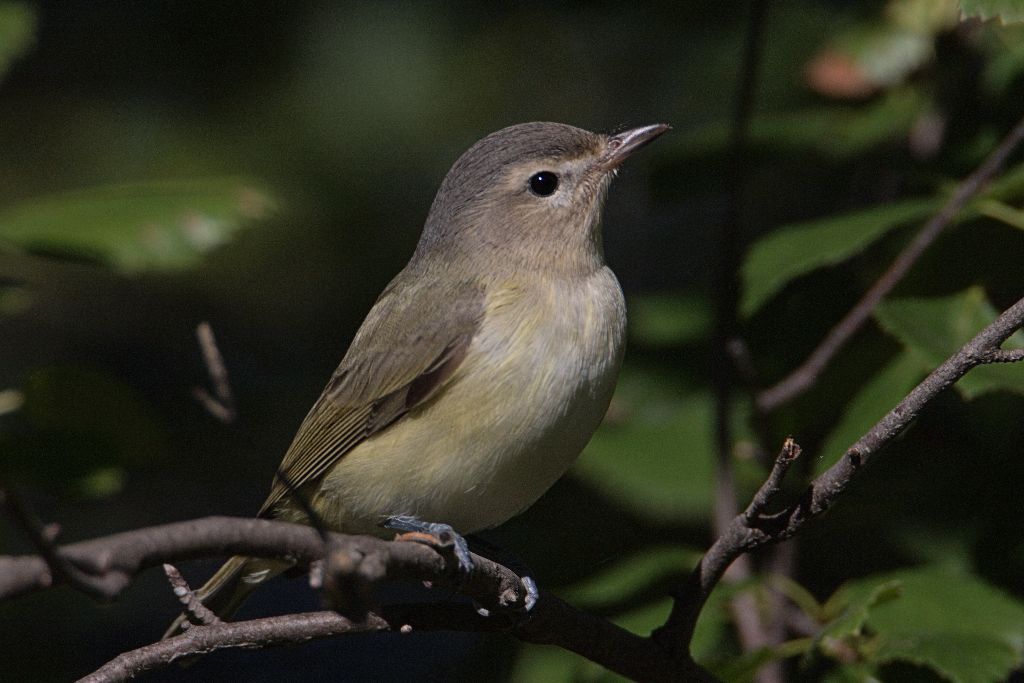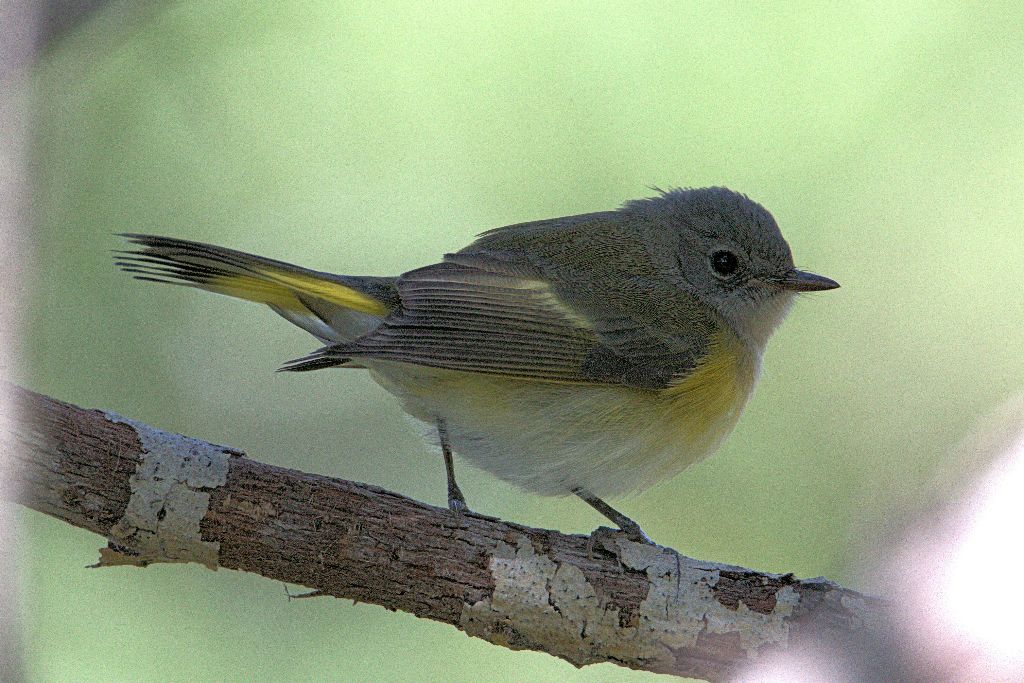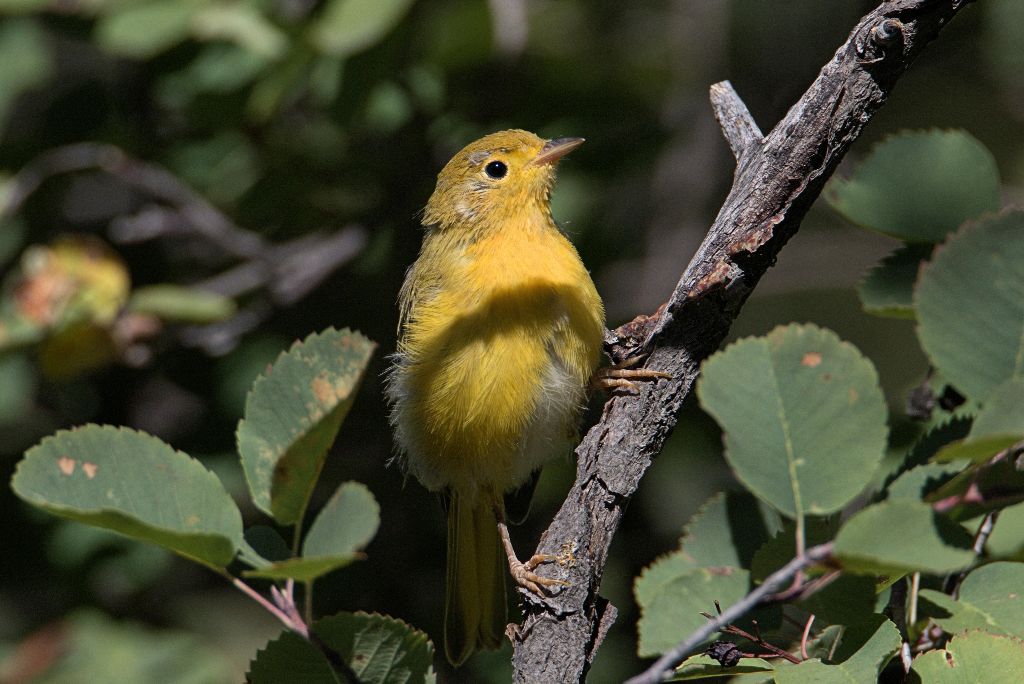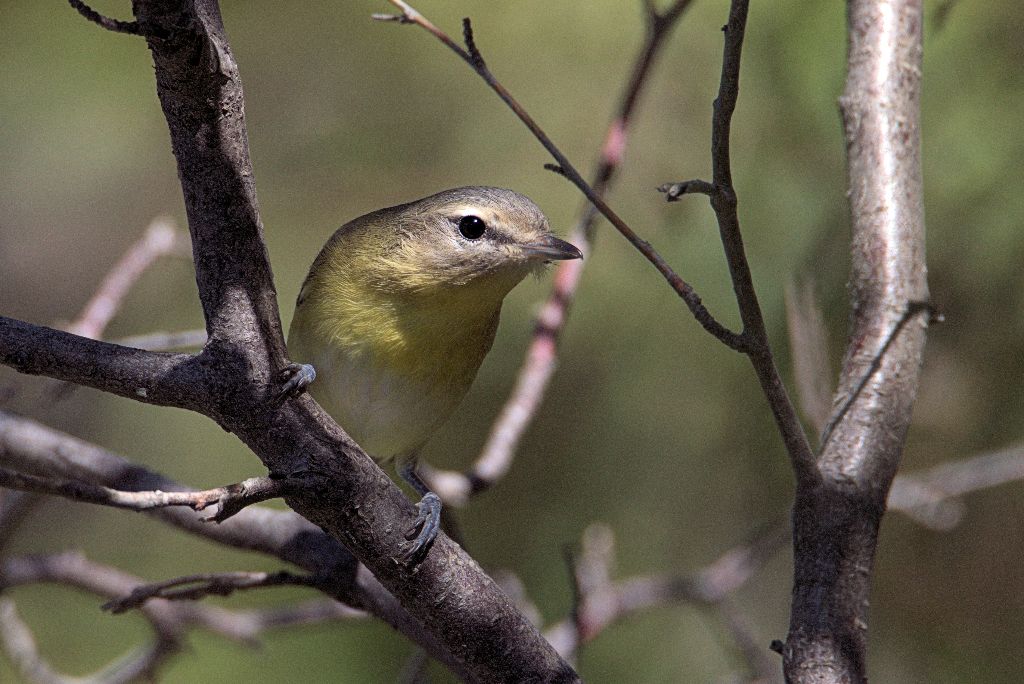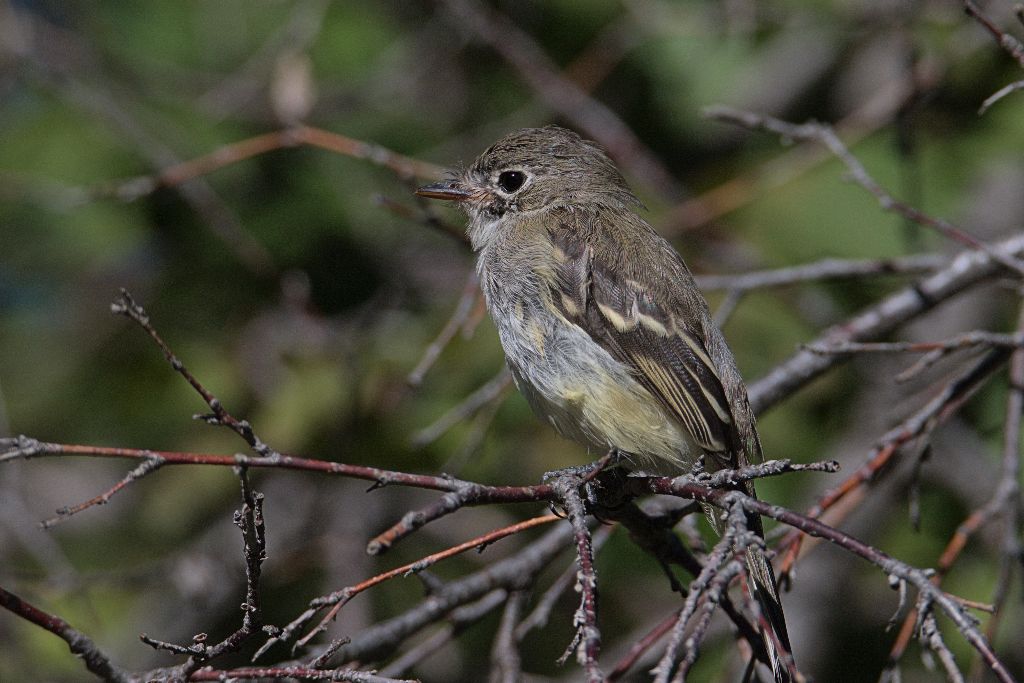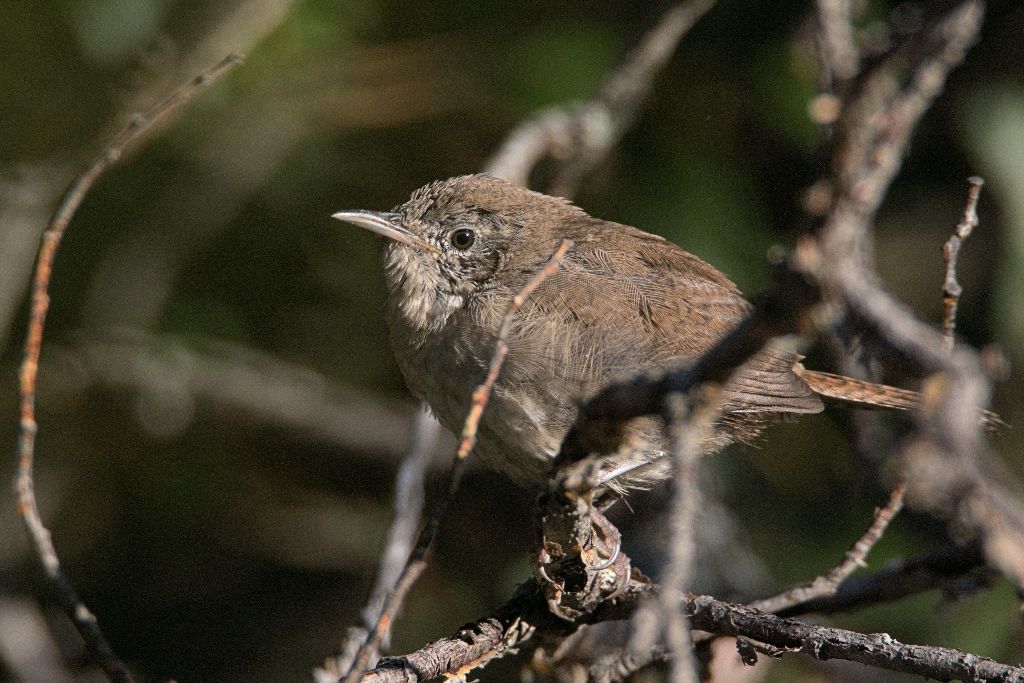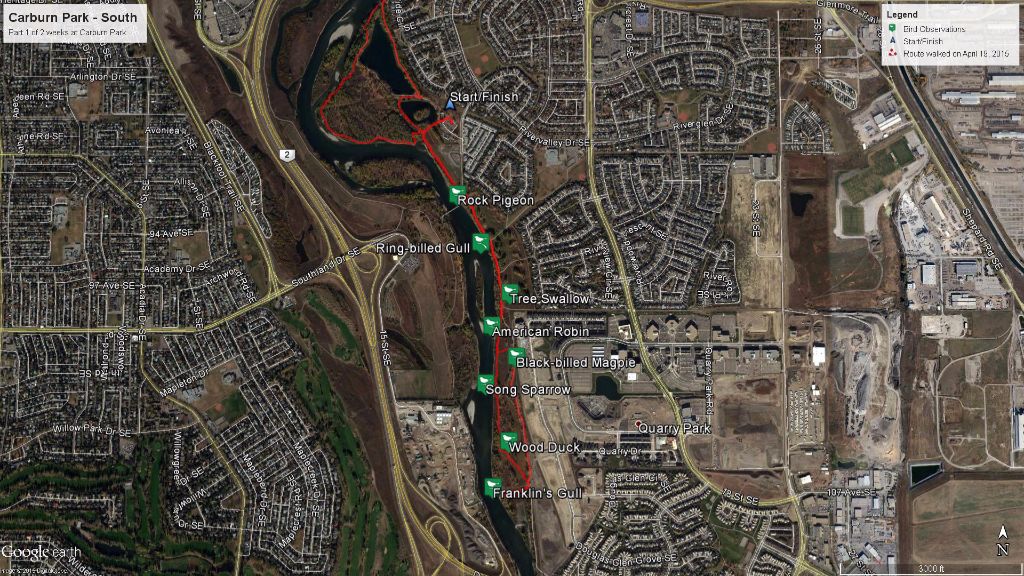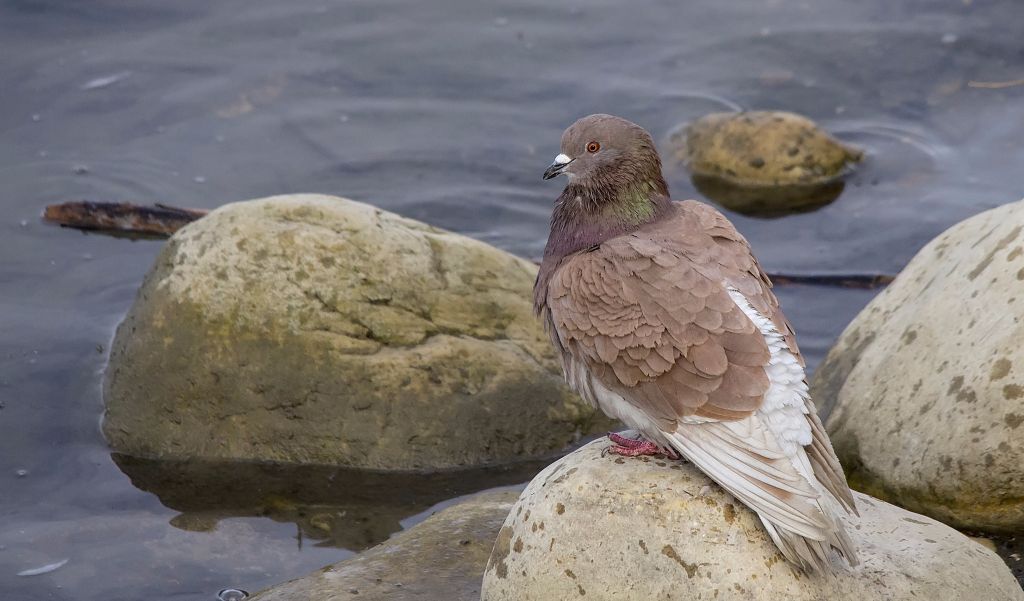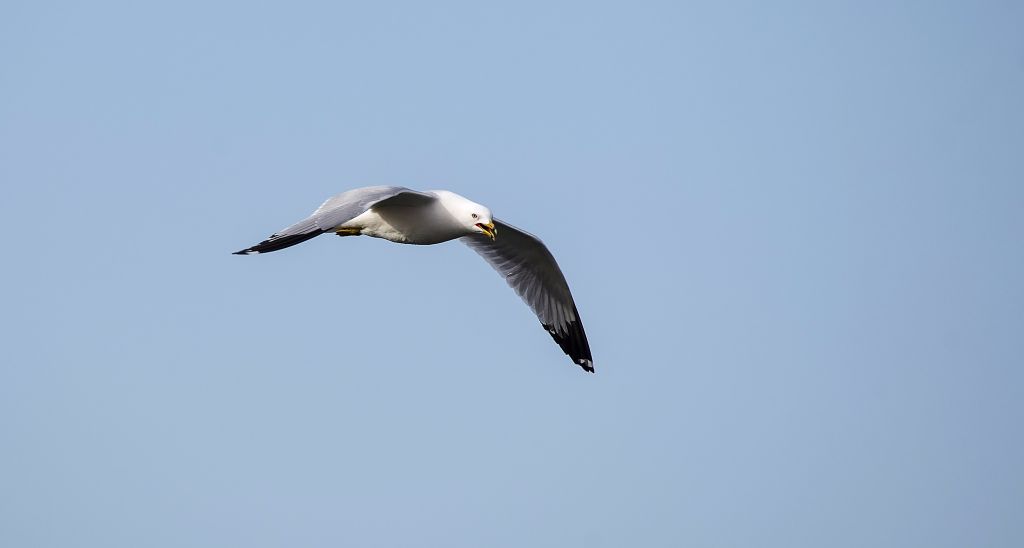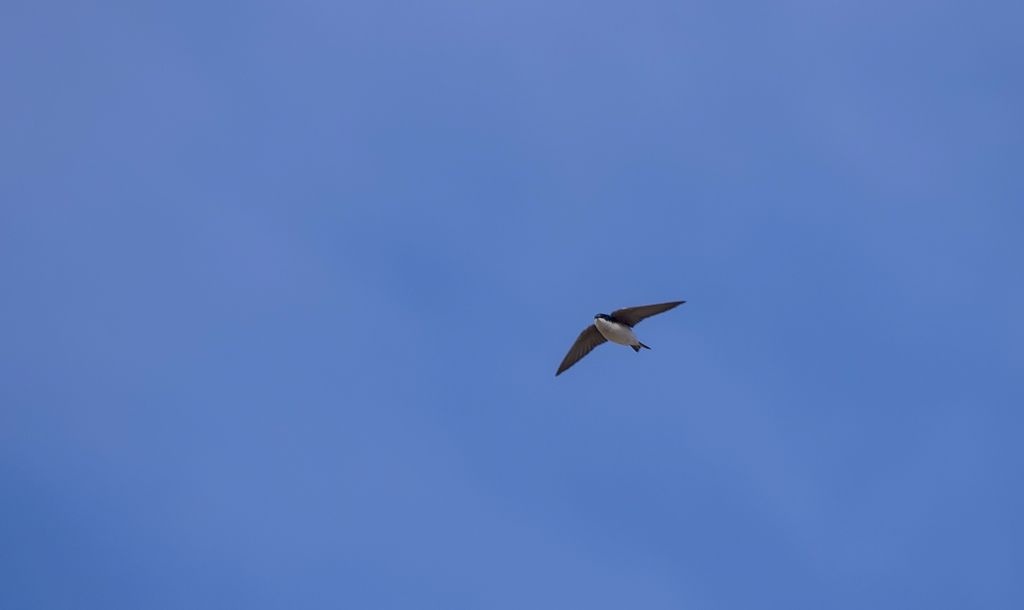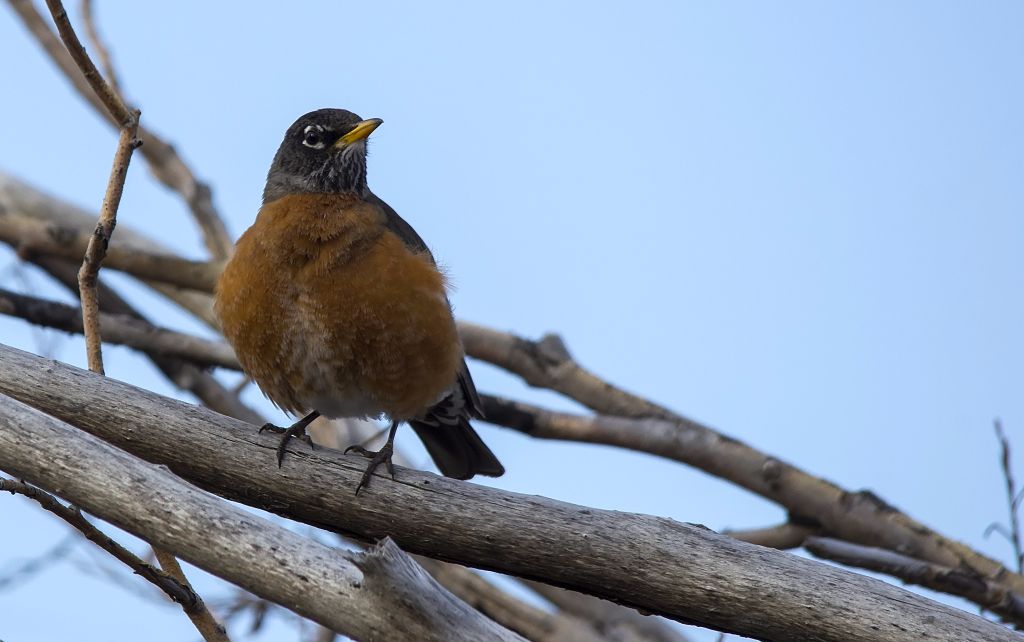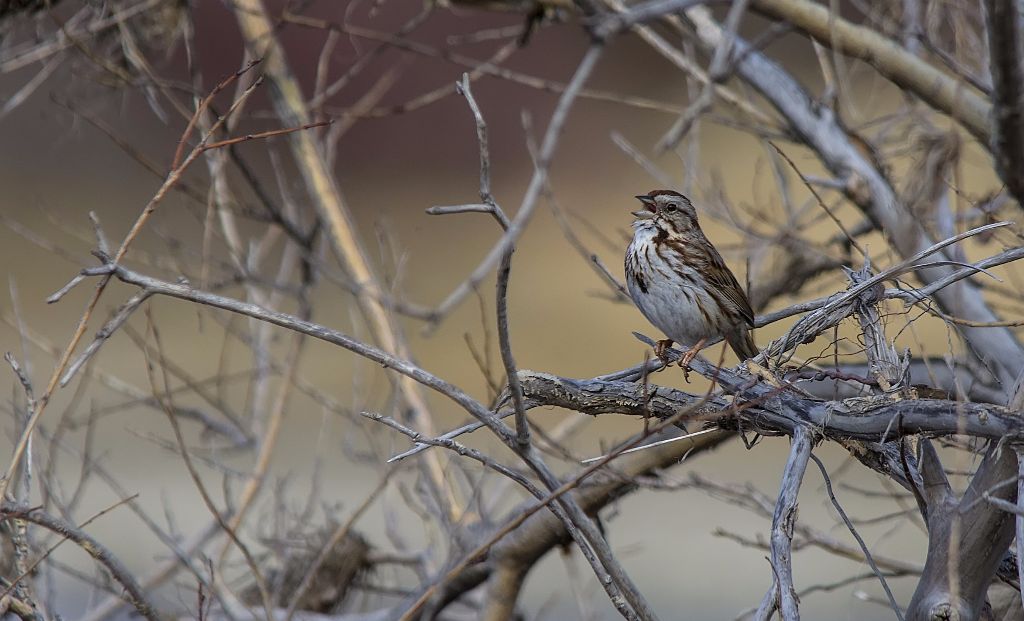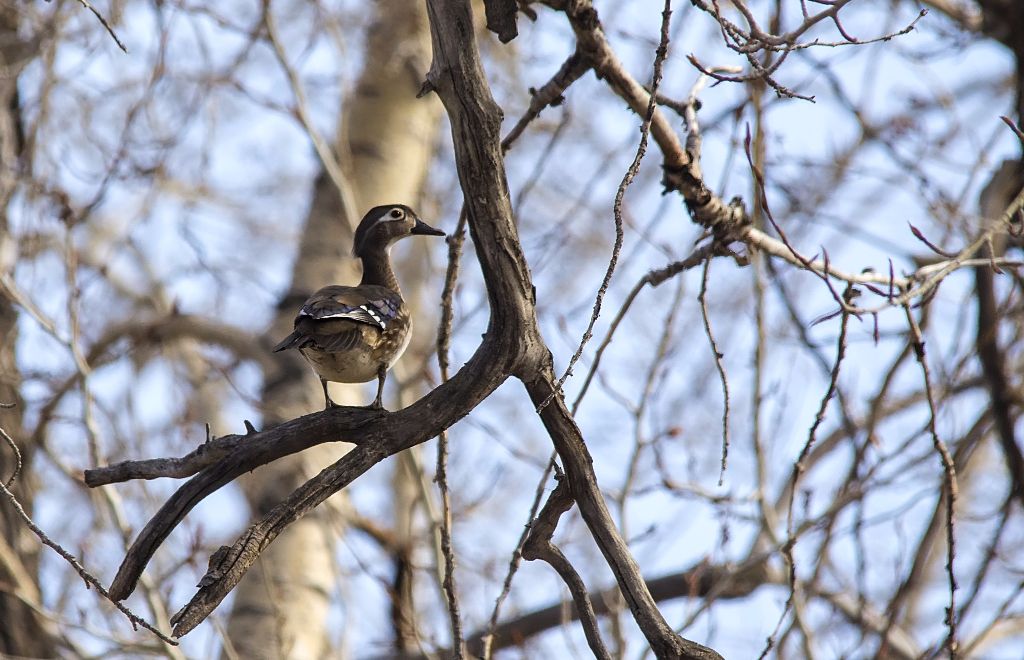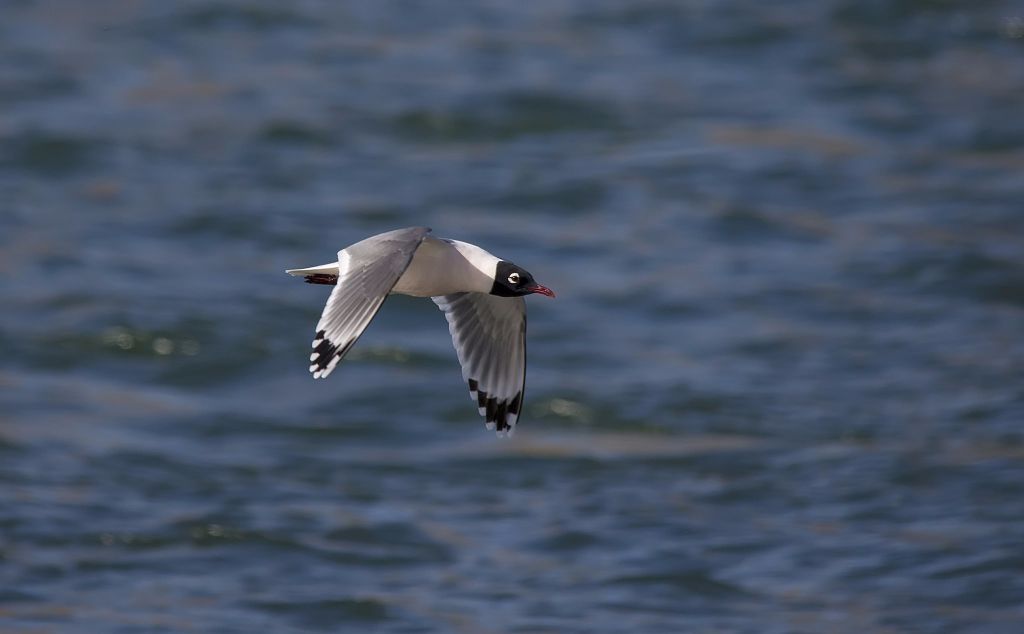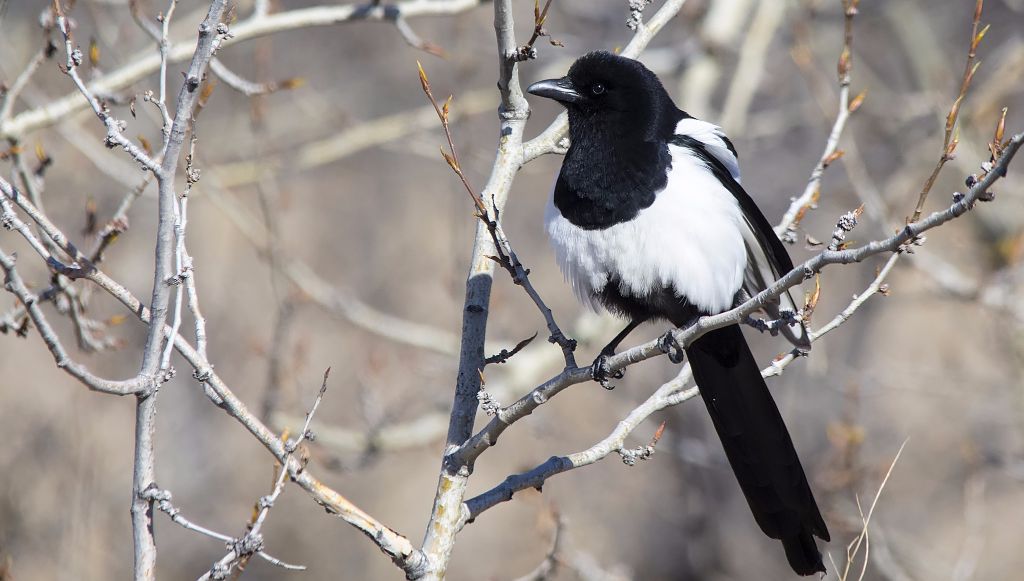Posted by Bob Lefebvre
The Friends of Fish Creek Provincial Park (FFCPP) winter birding course began just after the new year, and once again there are many groups going out six days each week to one of Calgary’s parks to learn about the birds. For week #1 we went to Carburn Park, where a few rare (for winter) birds have been seen recently. Our targets included a Pied-billed Grebe, a Red-breasted Merganser, and a Double-crested Cormorant.
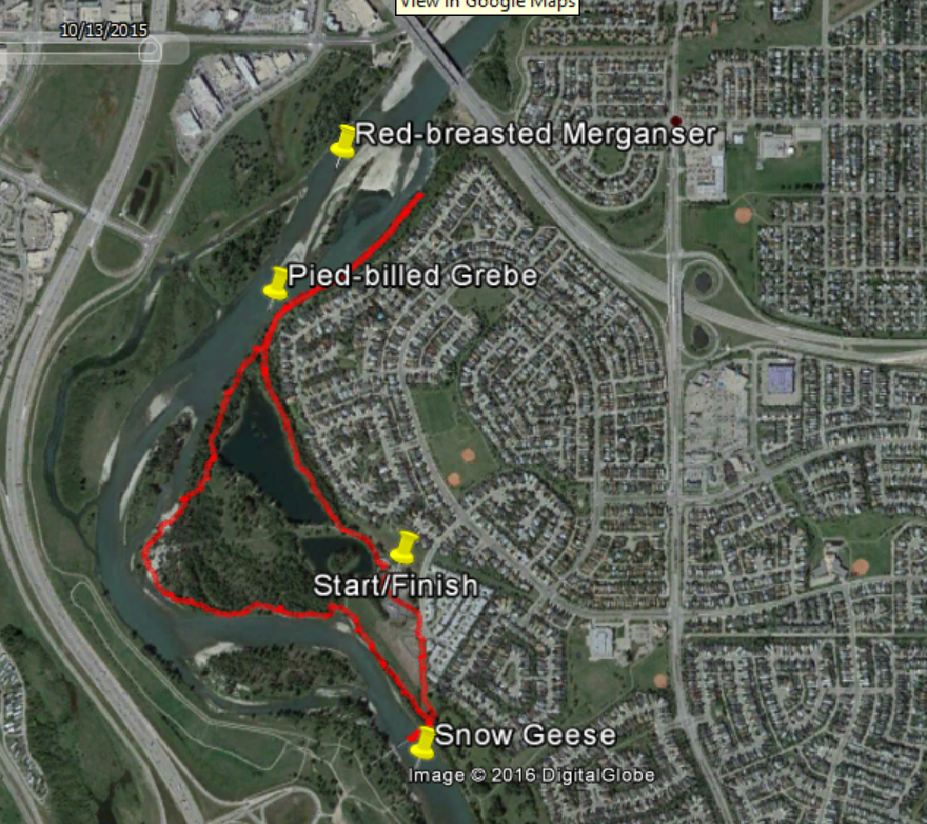
Carburn Park route, January 10, 2016.
Dan Arndt was away on the first Sunday of the course (January 10) so I filled in for him as one of the leaders. At the start we went south from the parking lot to the Sue Higgins Bridge. There, as we looked for Killdeer and Barrow’s Goldeneye, members of a Nature Calgary outing pointed out a pair of Snow Geese just downstream.
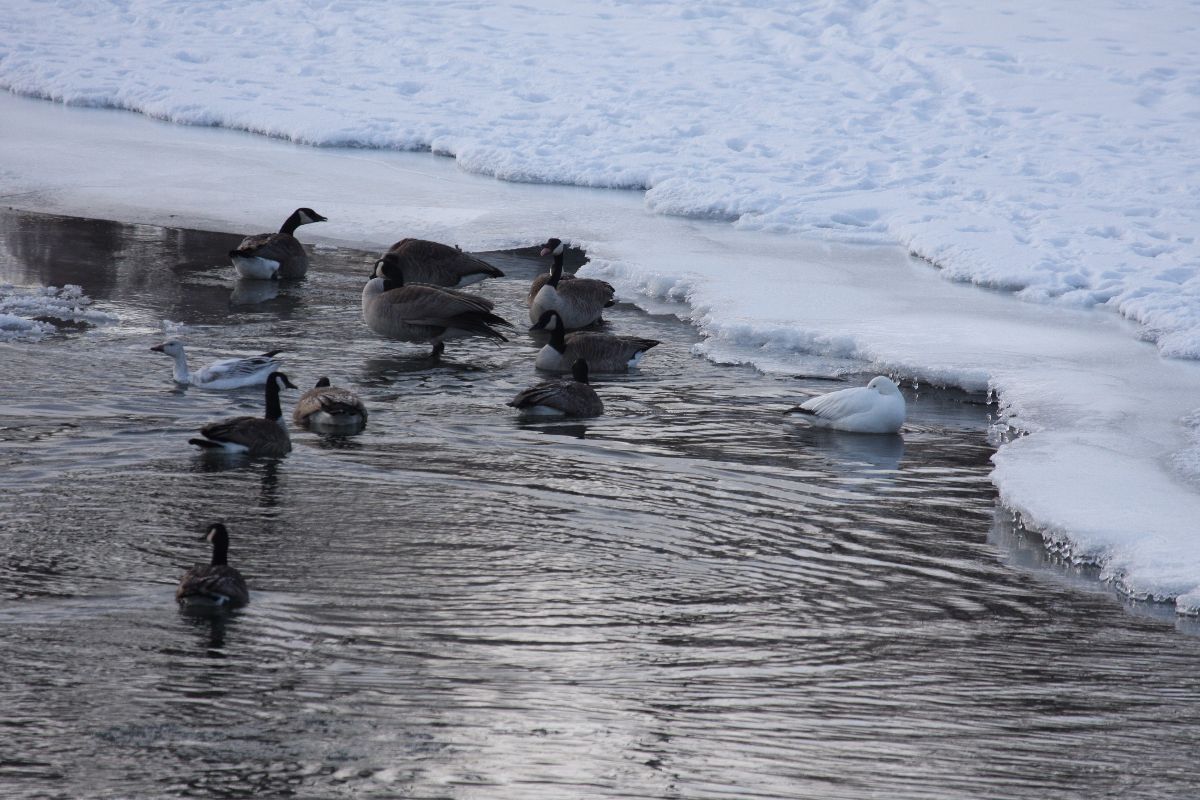
Immature (left) and adult (right) Snow Geese with Canada Geese.
Snow Geese are almost never seen in Calgary in Winter and hadn’t been reported from Carburn Park. However, we did have three, and adult and two immature birds, on the river at the Inglewood Golf Course in late December. Those three birds had been up on that stretch of the river for a while but had not been reported in the new year that I know of. These two geese at Carburn were likely the same ones, minus one immature bird. It may have been elsewhere on the river or perhaps it was predated or died for some other reason.
We did find some Barrow’s Goldeneye near the bridge as well. There are often quite a few in the Carburn Park/Beaverdam Flats section of the river.
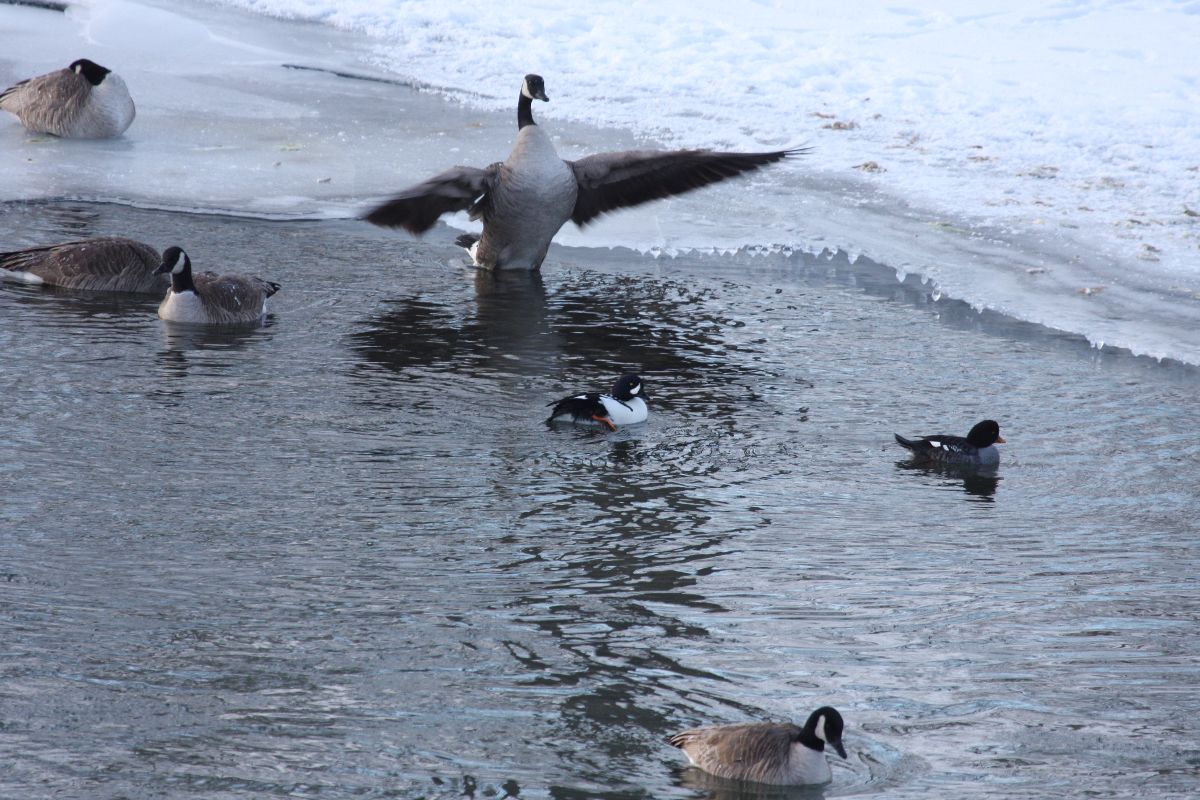
Male (left) and female (right) Barrow’s Goldeneye, with Canada Geese.
There were also some overwintering Killdeer on the ice at the river’s edge.
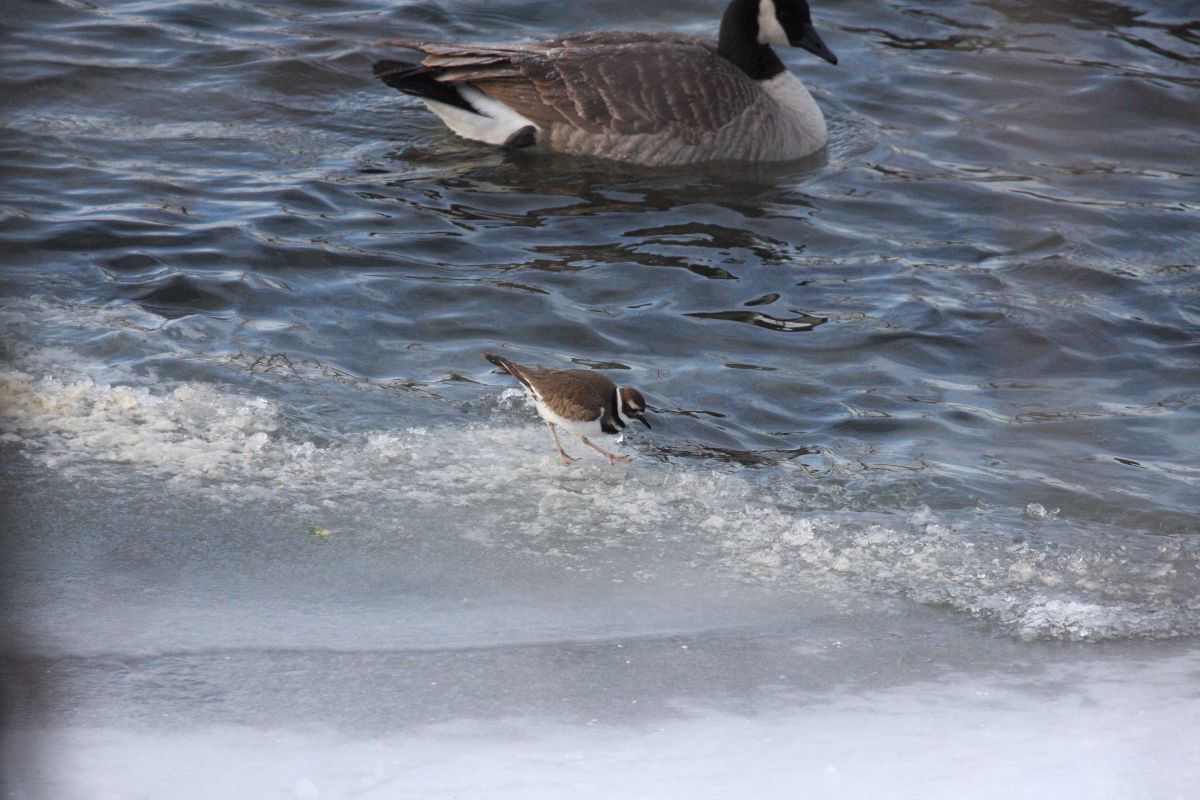
Killdeer with Canada Goose.
As we walked back to the main park, we spotted this Merlin on a branch overlooking the river.
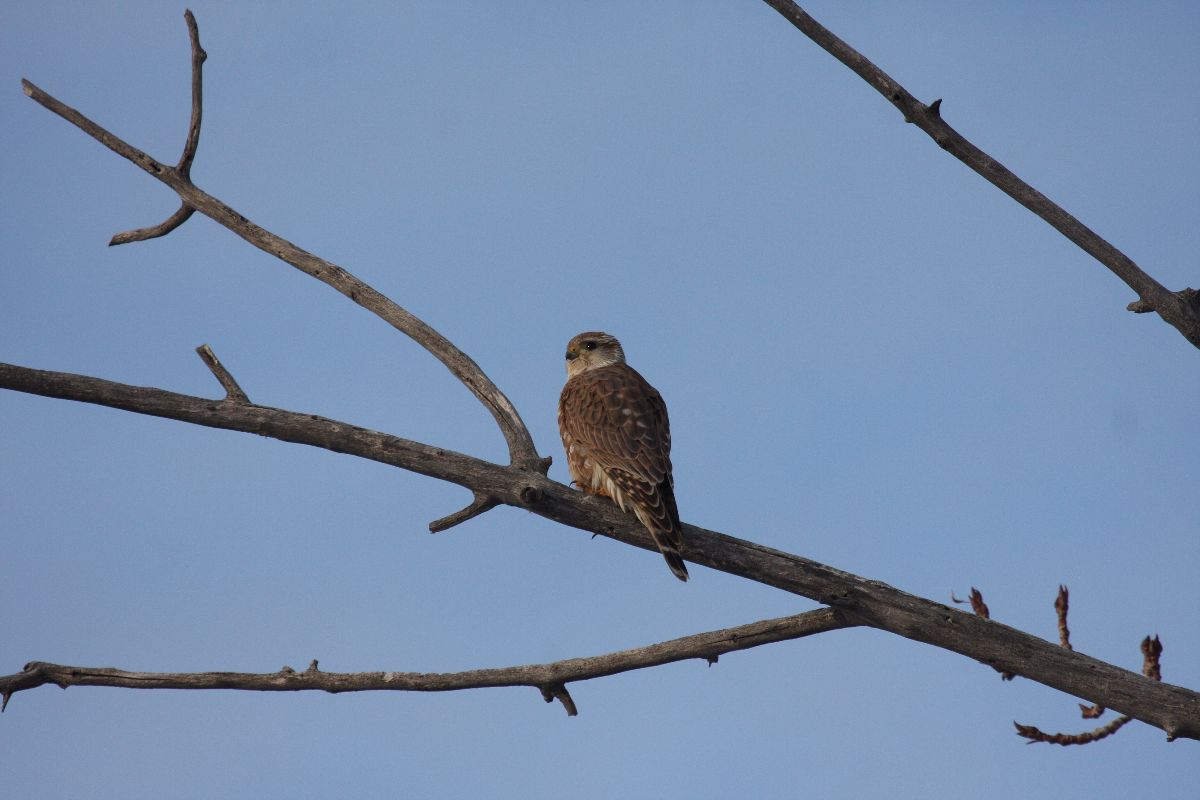
Merlin.
Farther north we found a lone scaup. We debated whether it was a Lesser or a Greater, but not having a scope that day, we weren’t sure. Later, the Nature Calgary leaders told us that they were able to identify it as a Greater using their scopes.
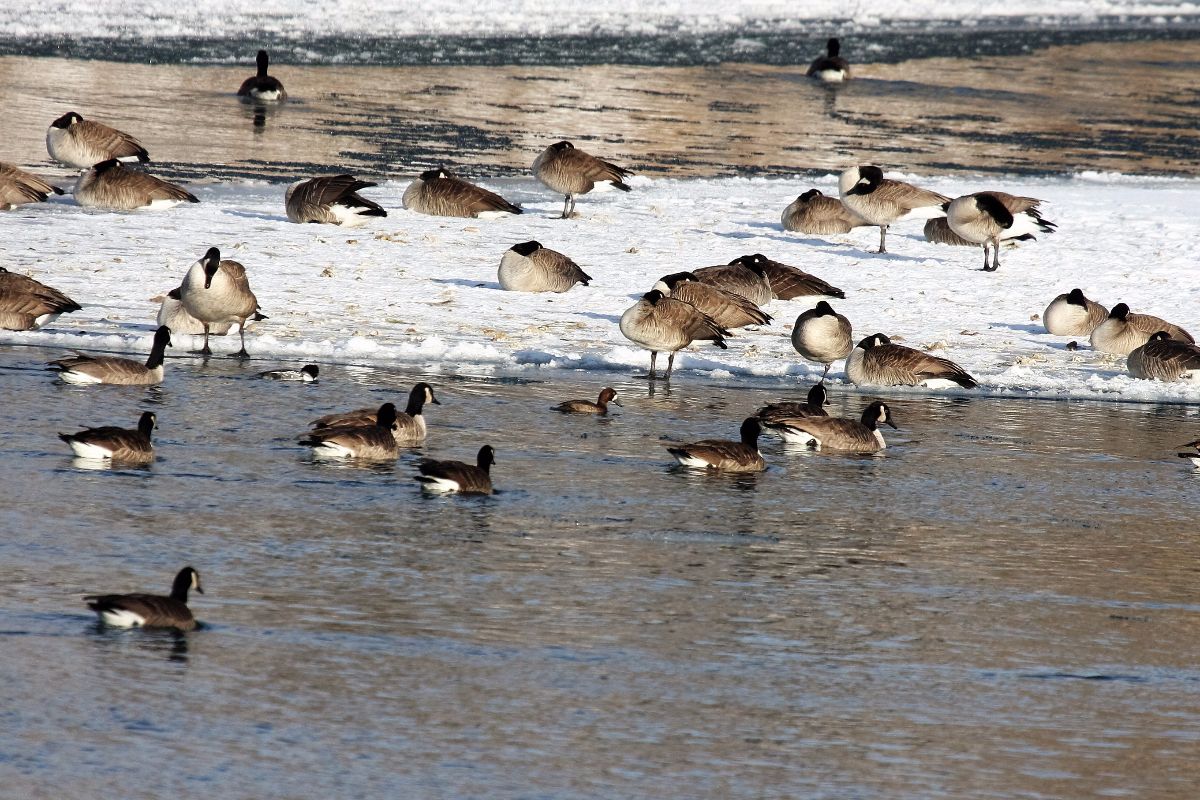
Greater Scaup (centre).
We saw a few Common Mergansers while we were watching out for the Red-breasted. Their bright orange-red bills really stood out, especially on the black and white males.
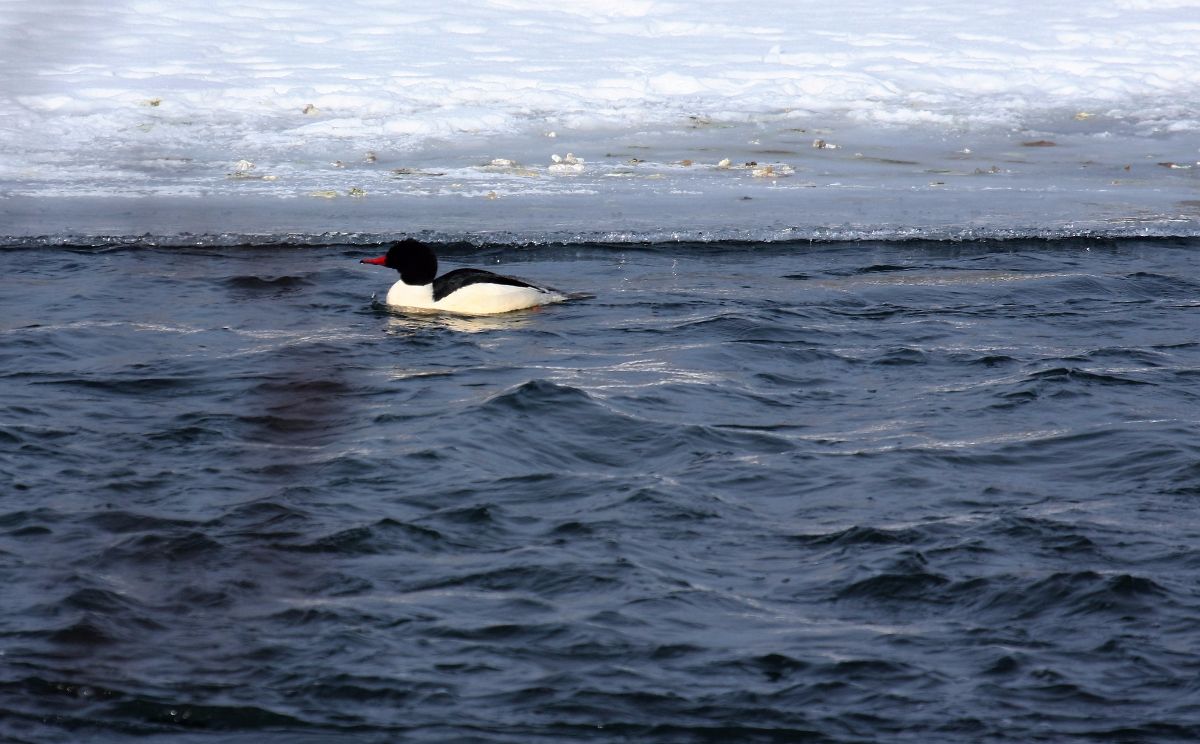
Common Merganser (male).
The mergansers spent quite a bit of time looking for fish, which they did by dipping their heads down so that their eyes were below the water as they floated downstream. Occasionally, they would see something worth chasing and make a dive.
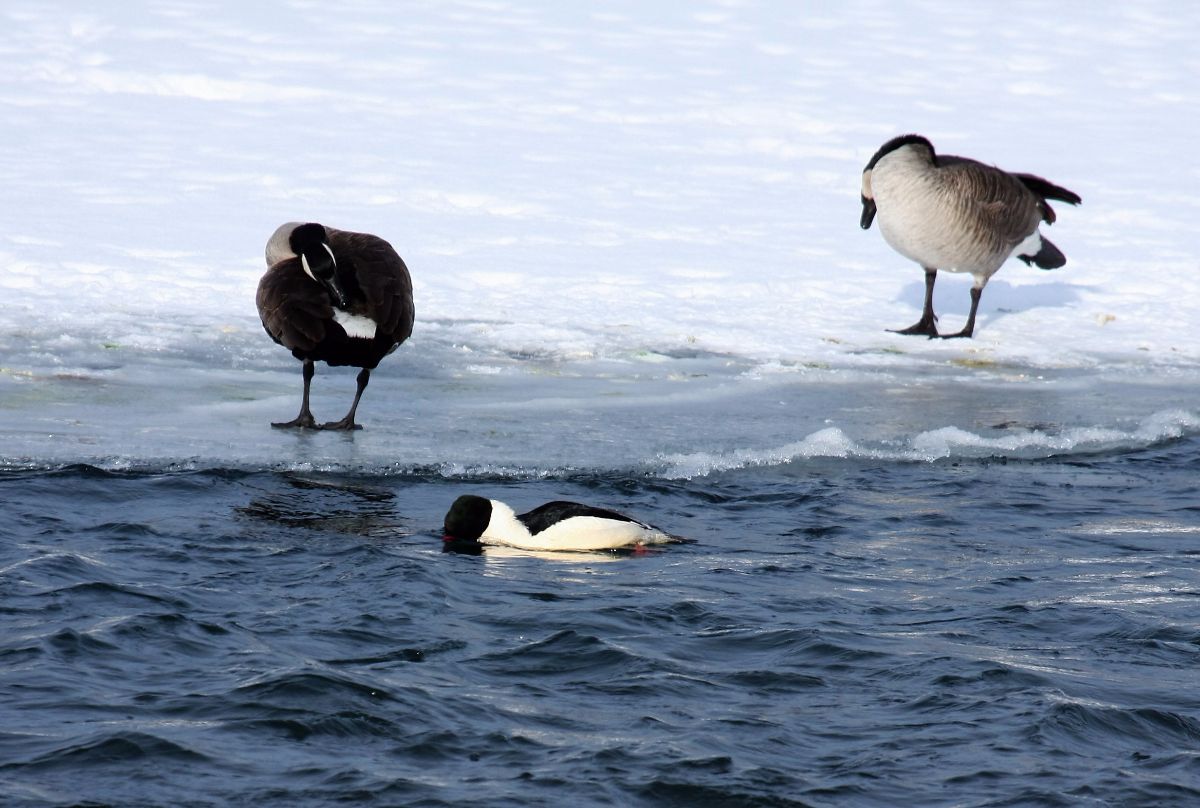
Male Common Merganser scanning the river bottom for fish.
Towards the north end of the park we found the Pied-billed Grebe by the near shore. These birds almost never overwinter here but this one has been in Carburn for quite a while now.
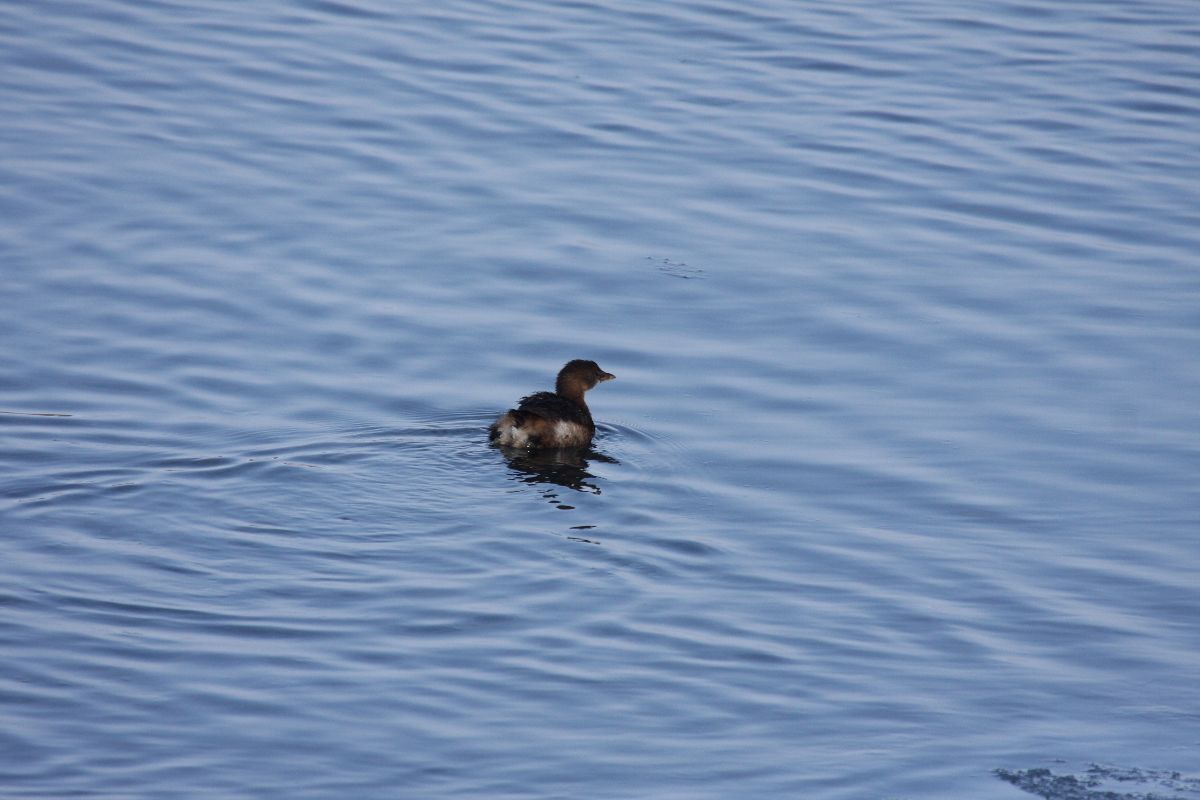
Pied-billed Grebe.
Finally, way at the far side of the river, we found the Red-breasted Merganser. It was quite a bit smaller and darker than nearby female Common Mergansers. Red-breasted Mergansers also have a very thin bill, which, at the distance we saw it from, was difficult to see at all.
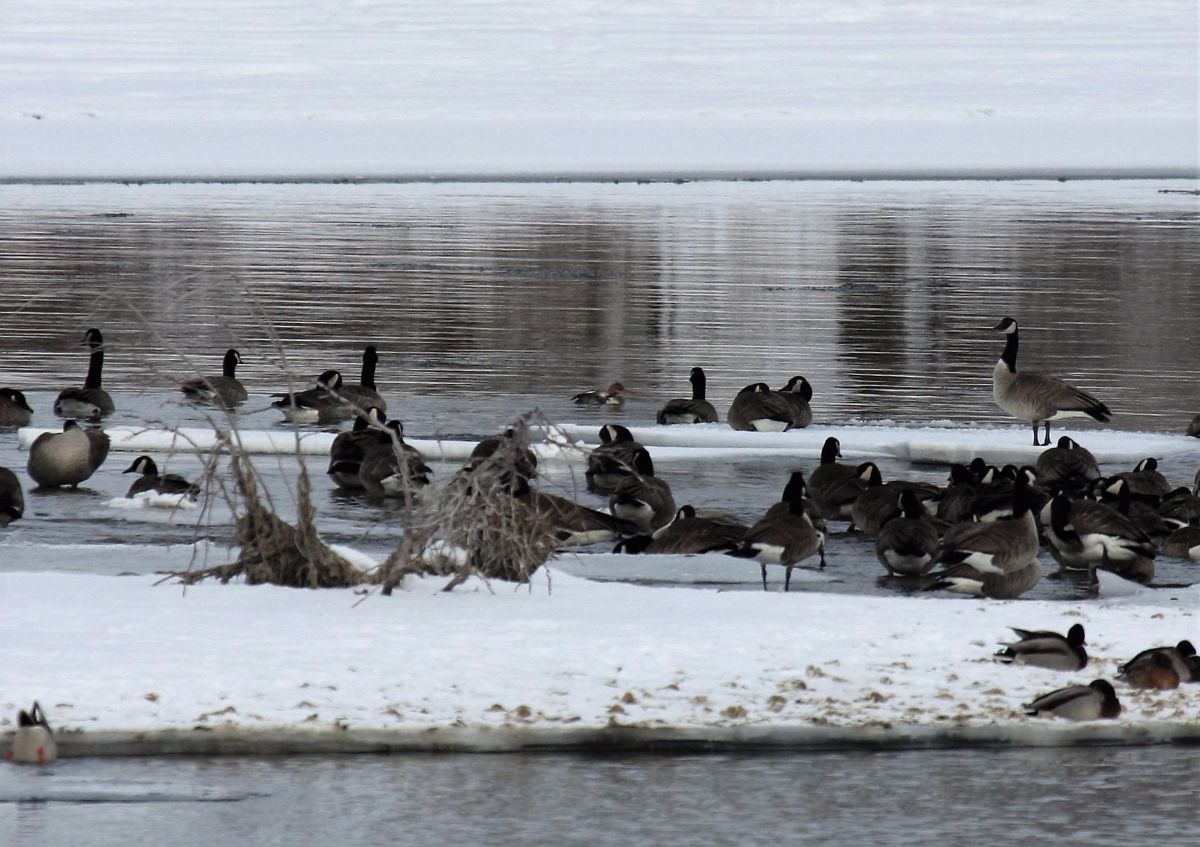
Red-breasted Merganser (at centre, on the other side of the ice).
Usually these birds are only seen in our area in small numbers on migration. (I didn’t see a single one in 2015.) Fall migrants can pass through as late as November or even early December, but seeing one in January is extremely rare here.
A nice surprise at the end of our walk was a small flock of about eight Cedar Waxwings. A few usually overwinter here every year, where they are overshadowed by vast flocks of Bohemian Waxwings.
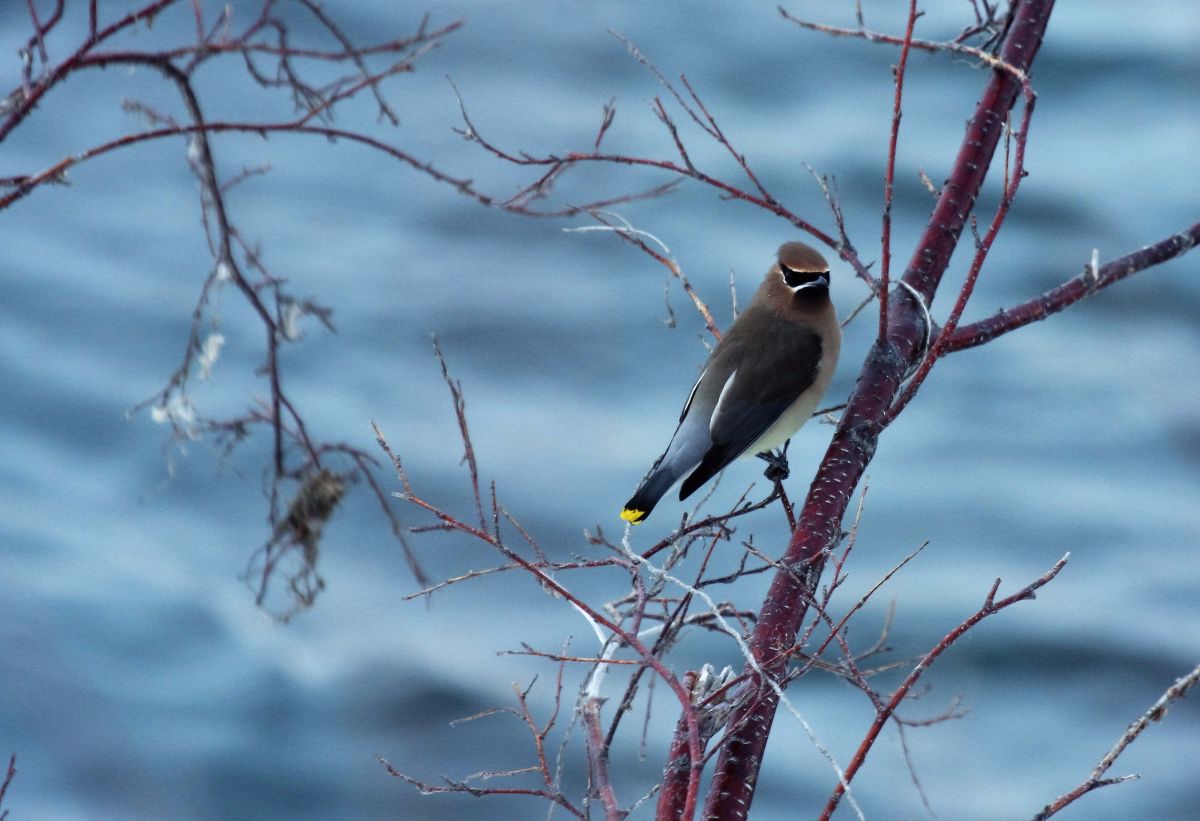
Cedar Waxwing.
We didn’t see the overwintering cormorant that day, but there were lots of good birds for a mid-winter day!
Dan will be back in this space soon with photos and reports from Bebo Grove and Votier’s Flats.




































